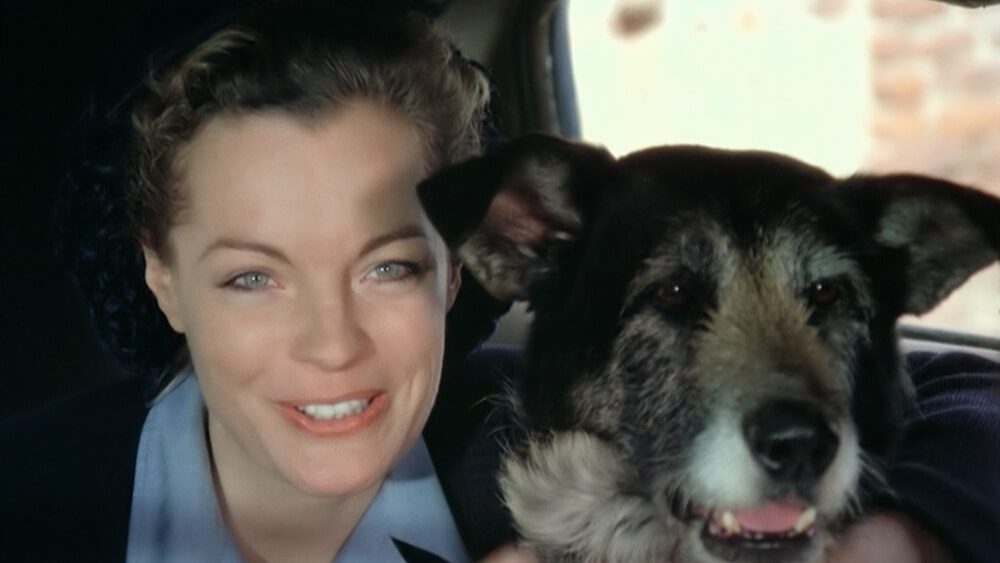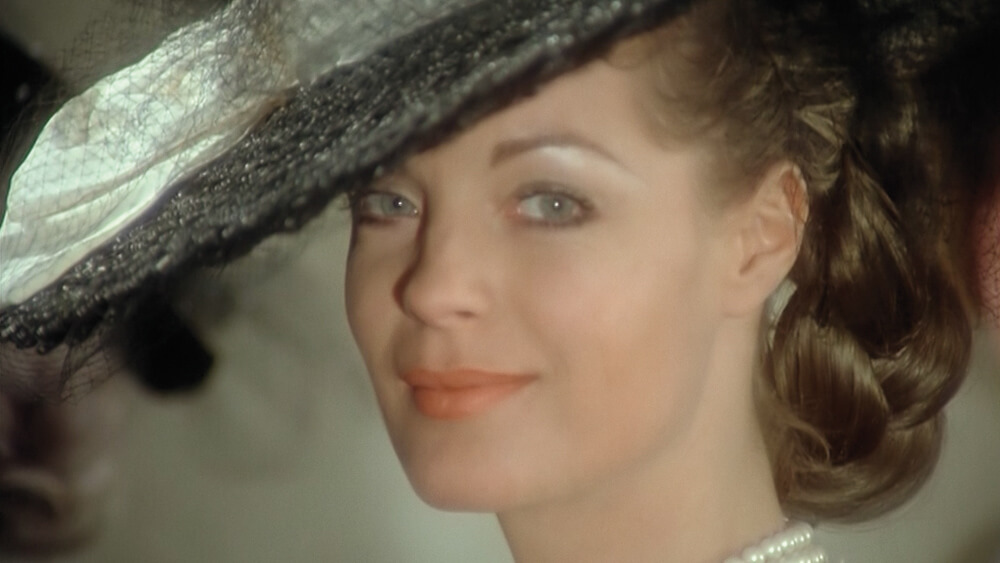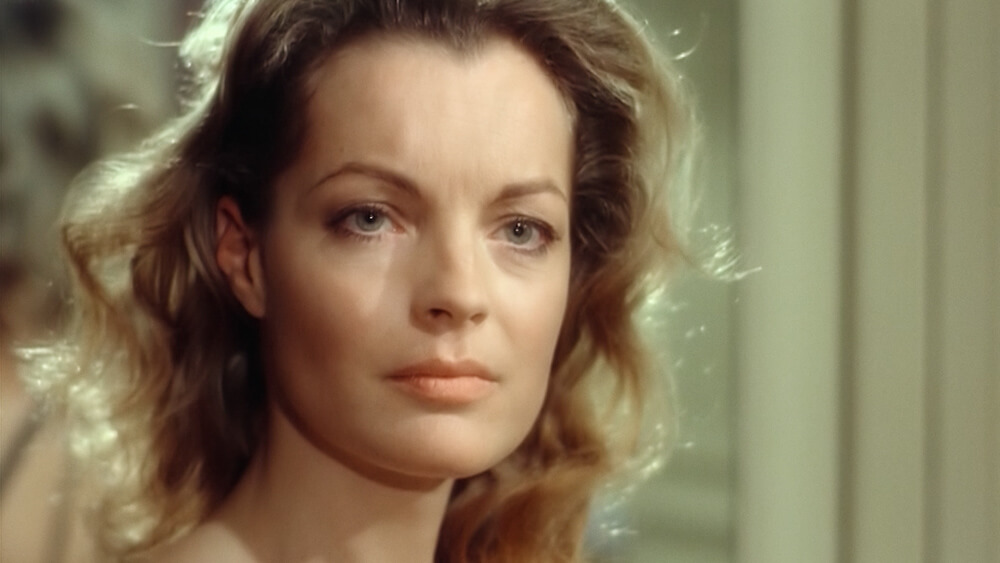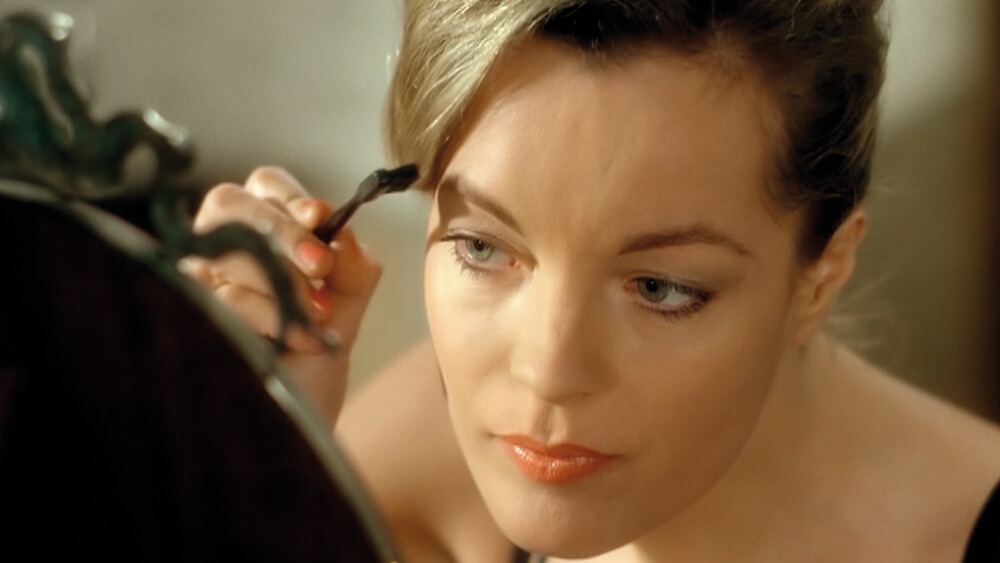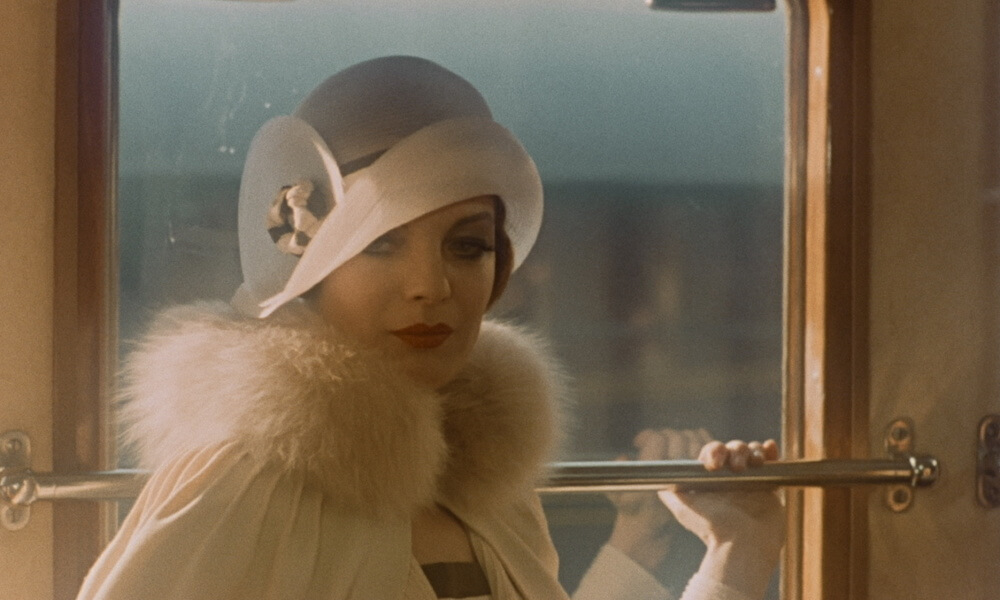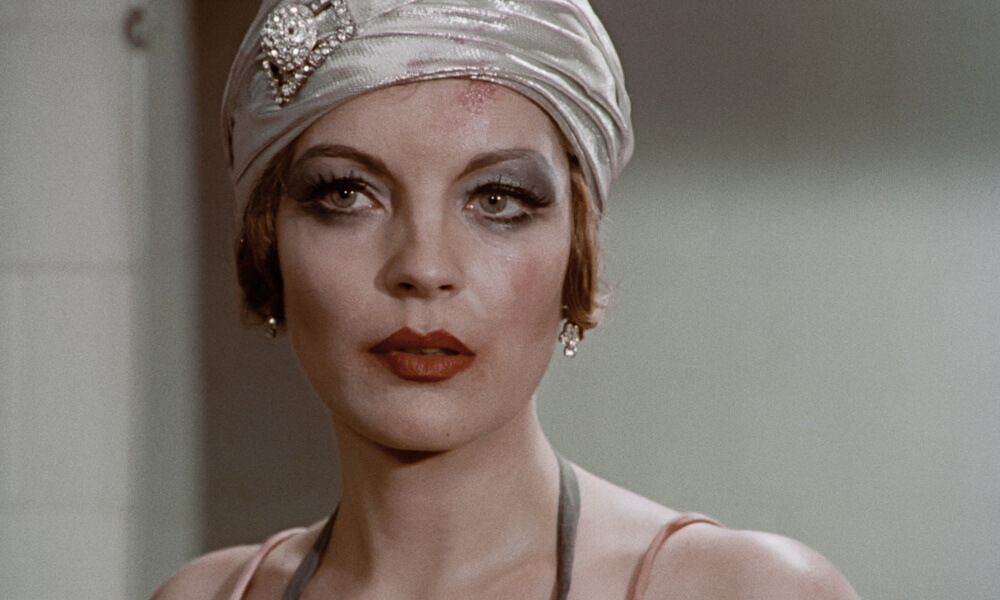On May 29, 1982, the 43-year-old actress Romy Schneider died alone in her flat in Paris. With her films from the 1970s at the latest, the actress proved that she had long since emerged from the candyfloss world of Sissi films. At that time, she had already been working for 15 years mainly in France, where she is still counted among the grandes dames of cinema. Renowned directors from Luchino Visconti, Claude Sautet, Bertrand Tavernier to Costa-Gavras have had her in front of the camera and her film partners of this period are the “Who’s Who” of French cinema. She won her first César in 1975 for her role in the film “That Important Thing: Love“.
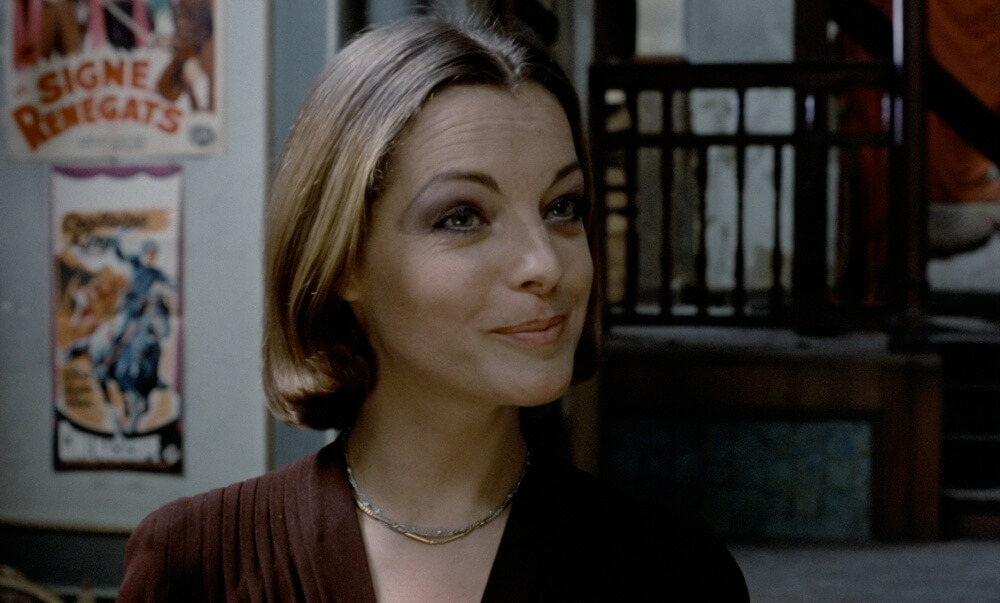
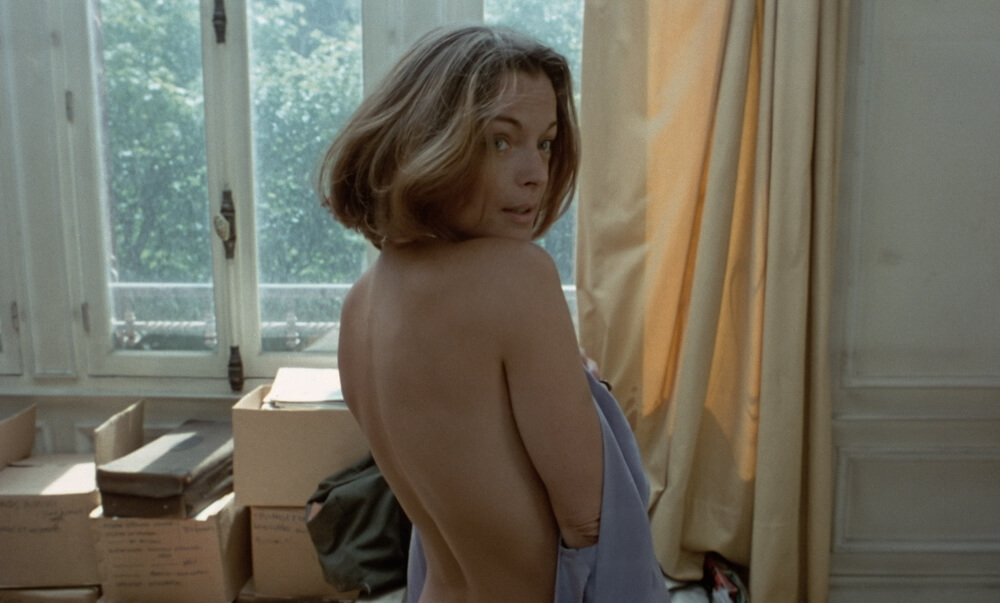
Romy Schneider‘s life was turbulent and marked by many tragic strokes of fate – at the latest with the accidental death of her son in 1981, she seemed to have lost all her footing. Her heavy consumption of alcohol and tablets, a constant companion for years, got more and more out of control.
Romy Schneider died under circumstances that remain unclear to this day. Her partner at the time, the French film producer Laurent Pétin, found her slumped lifeless at her desk in the early morning, with an unfinished handwritten letter lying next to her. The official cause of death was heart failure, but an autopsy was never performed and so suicide rumours quickly circulated. Romy Schneider was buried in the cemetery of the small village of Boissy-sans-Avoir, her last place of residence.
Biography of Romy Schneider
Romy Schneider was born on 23 September 1938 in Vienna under her civil name Rosemarie Magdalena Albach-Retty as the daughter of the actor couple Wolf Albach-Retty and Magda Schneider. Her paternal ancestors belonged to the famous Austrian acting dynasty Albach-Retty. This extended back to her great-great-grandfather Adolf Retty (born 1821). Romy Schneider grew up at Königssee, in the village of Schönau, and attended primary school there from 1944. In 1949 she transferred to the girls’ boarding school Schloss Goldenstein near Salzburg. There she often took part in school theatre performances, where she discovered her passion for acting. In July 1953, after graduating from school she was to attend an art school in Cologne, as her talent for painting had been discovered.
In favour of her first film role in “When the White Lilacs Bloom Again“, she renounced her school attendance. Romy Schneider got this role at the suggestion of her mother Magda Schneider, who took the leading role in the film. In addition to Romy Schneider, Götz George also made his film debut in this film. After a few more trivial films, she played a role in the remake of the 1924 Murnau classic “The Last Man” alongside Hans Albers, which also attracted attention from the critics.
Her international breakthrough came with the “Sissi” trilogy that followed. Soon everyone in the film world knew who Romy Schneider was. Her stepfather Herbert Blatzheim, Magda Schneider‘s second husband, took over her management from 1955. He urged her to make the second Sissi film, a role Romy Schneider actually no longer wanted to play.
Romy Schneider was looking for artistically demanding roles. Nevertheless, she agreed, and so “Sissi, the Young Empress” was made in 1956. In 1957 she succeeded for the first time in slipping out of the role of the lovely, well-behaved German model girl from the Heimatfilm romance. In the film “The Girl and the Legend” she played the daughter of a cotton spinner from the lower class. It was the first role Romy Schneider had chosen for herself.
When she learned that her stepfather Herbert Blatzheim had turned down several film offers, including the remakes “The Three from the Filling Station“, ” The Congress Dances” as well as a film offer from the famous Spanish-Mexican film director Luis Buñuel, Romy Schneider became furious. Moreover, an offer from Hollywood failed because of the conditions set by Blatzheim. Romy Schneider now took her acting future into her own hands. Her next film, “Mädchen in Uniform“, with many great actresses like Lilli Palmer, Therese Giehse, Sabine Sinjen and Christine Kaufmann brought her the longed for recognition as a character actress. With the film “Christine” came the complete turnaround in her life.
After the end of the shooting she left Germany together with her film partner Alain Delon and went to Paris. There she shot three more movies in 1959, “Mademoiselle Ange“, “Die schöne Lügnerin” and “Magnificent Sinner“. In the next years Romy Schneider acted mainly in Paris. One of her theatre directors was Luchino Visconti, from whom she learned a lot. In 1962, also under Visconti‘s direction, she took on another film role in “Boccaccio 70“. Now followed several roles in blockbusters such as “The Trial“, “The Victors“, “The Cardinal“.
In the 60s and 70s Romy Schneider was at the height of her career. In 1963 she made the comedy “Good Neighbor Sam” in Hollywood alongside Jack Lemmon. Privately, however, 1963 was a bad year. Her relationship with Alain Delon fell apart. When she returned from the USA, he had already moved out of the flat they shared. She then attempted suicide. Romy Schneider then took time off. It was not until a year later that she shot the film “L’Enfer” with the old master Henry-Georges Clouzot. But bad luck stayed with her, the film was never finished. First her film partner Serge Reggiani fell seriously ill, then director Clouzot suffered a heart attack. In 1965 followed one of her most successful films, “What’s New, Pussycat?“, based on a script by Woody Allen. During a visit to Germany she met the actor and director Harry Meyen, they became a couple. During the filming of the movie “Triple Cross” in 1966, Romy Schneider und Harry Meyen married. Their son David was born in December of the same year.
In the following two years Romy Schneider devoted herself exclusively to her duties as a wife and mother. It was not until 1968 that Romy Schneider began filming again. In 1969 she acted again in the film “The Swimming Pool” at the side of her ex-lover Alain Delon. The film became one of her greatest successes. A series of films followed in the 70s, including such well-known and successful ones as “Love at the Top“, “The Infernal Trio“, “The Old Gun” and “That Most Important Thing: Love“. In 1975, Romy Schneider divorced Harry Meyen. At this time Romy Schneider was already in a relationship with Daniel Biasini, her private secretary, whom she married the same year. After the birth of her daughter Sarah, she made one of her most successful films ever in 1978 with the film “A Simple Story“. From then on, however, her life only went downhill. Her ex-husband Harry Meyen hanged himself in 1979. Romy Schneider lost many of her fans’ sympathies with the film “Death Watch“, the story of a sick, doomed woman who sold the rights to her death to a television company for broadcast. This film won some awards but failed with the audience. During the shooting of three other films there were repeated problems because of Romy Schneider‘s excessive alcohol consumption. She appeared drunk on the set several times or did not appear at all.
On 5 July 1981, her son David was killed in an accident. This event threw her completely off course. Her second marriage with Daniel Biasini was at an end and she divorced him. Romy Schneider also had to undergo a serious kidney operation. Her complete downfall was prevented by her new lover Laurent Petin. He gave her some stability again. Director Jacques Rouffio persuaded her to make another film, “The Passerby“. It was to be her last film. On the night of 29 May 1982, she died as a result of excessive tablet consumption. The death was not a suicide, but a consequence of her tablet and alcohol addiction. Romy Schneider was buried in the cemetery of the small village of Boissy-sans-Avoir, her last place of residence. Alain Delon had organised her funeral.
Filmography (excerpt)
| 1953 | When the White Lilacs Bloom Again |
| 1955 | The Last Man |
| Sissi | |
| 1956 | Sissi: The Young Empress |
| 1957 | The Girl and the Legend |
| Sissi: The Fateful Years of an Empress | |
| 1958 | Scampolo |
| Girls in Uniform | |
| 1959 | Eva |
| 1962 | Fire and Ice |
| The Trial | |
| 1963 | The Victors |
| The Cardinal |
| 1964 | Good Neighbor Sam |
| 1965 | What’s New Pussycat |
| 1966 | Terence Young’s Triple Cross |
| 1969 | The Sinners |
| 1971 | Max and the Junkmen |
| 1974 | Love at the Top |
| The Infernal Trio | |
| 1975 | The Most Important Thing: Love |
| The Old Gun | |
| 1978 | A Simple Story |
| 1981 | The Inquisitor |
| 1982 | The Passerby |
New release of three classics on the occasion of Romy Schneider’s 40th death anniversary
In spring and summer 2022, UCM.ONE will release three classic films from the mid-1970s starring Romy Schneider on the Artkeim² label in collaboration with moviemax as part of the Édition ParaSol Videothèque: “That Important Thing: Love“, “The Infernal Trio” and “The Old Gun“. The lavishly rescored and restored in full HD versions are released as a strictly limited mediabook, on Blu-ray and DVD.
That most Important Thing: Love (by Andrzej Żuławski)

April 29 sees the release of “That most Important Thing: Love” (German title: “Nachtblende“) from 1975, the first film by Polish director Andrzej Żuławski to be shot in France and a major scandal upon its release. Here Romy Schneider plays an unsuccessful actress trapped in a love triangle with Fabio Testi and Jacques Dutronc and alongside Klaus Kinski in a memorable supporting role. For her performance, she received her first César as “Best Actress“ in a Leading Role in 1976 – incidentally, the first ever awarded in this category.
Synopsis: The actress Nadine Chevalier (Romy Schneider) is confronted with the low point of her career. With no serious commitment and no demand, she shoots soft porn to keep herself and her manic-depressive and impotent husband Jacques (Jacques Dutronc) afloat. During a shoot she meets the photographer Servais Mont (Fabio Testi), who immediately falls in love with the attractive actress. He decides to help her out of her professional misery and, with the help of the actor Zimmer (Klaus Kinski), gets her a part in the third-rate theatre production “Richard III”. But in return he must also invest in the play. To raise the money for this, Servais goes to the underworld godfather Mazelli, for whom he has previously produced compromising photos for blackmail purposes. But with this he is heading more and more towards a tragic end…
More information about the movie: That Most Important Thing: Love
The Infernal Trio (by Francis Girod)

May will see the release of “The Infernal Trio” (German title: “Trio Infernal“) by Francis Girod from 1974, featuring Romy Schneider with her long-time film partner Michel Piccoli and the young Mascha Gonska – based on a true story – as a murderous trio wreaking havoc in the South of France in the 1930s. The fantastic music for this bloody black comedy with thriller elements and plenty of eroticism was composed by Ennio Morricone.
Synopsis: Marseille 1931. Philomene Schmidt (Romy Schneider), a beautiful young German who works as a nurse for an old woman, finds herself on the street after her death. But when the self-absorbed and extremely unscrupulous lawyer Georges Sarret (Michel Piccoli) enters the lives of Philomene and her sister Catherine (Mascha Gonska), everything changes. The young women not only become Sarret’s lovers, but also his accomplices in numerous insurance scams. He arranges for the two to meet wealthy older men who disappear without a trace or suddenly die soon after the wedding. The “Infernal Trio” then collects the high insurance sums that their victims have previously taken out for their deaths with their wives as beneficiaries…
More information about the movie: The Infernal Trio
The Old Gun (by Robert Enrico)

Finally, “The Old Gun” (German titles: “Abschied in der Nacht” [West German cut] and “Das alte Gewehr” [East German cut]) will be released. Here Philippe Noiret is Romy Schneider‘s screen partner in a revenge drama set at the time of the German occupation of France during the Second World War. The film has a very interesting history: in order not to offend the audience in the FRG too much, some “defusing” scenes with Wehrmacht soldiers were shot as alternative editing material. This was then included in the version for West Germany, while the original version was shown in the GDR. For this reason, there is also a West German and an East German dubbed version. UCM.ONE is now releasing the West German cut and sound version in full HD for the first time, and the bonus material goes into detail about the differences between the two versions.
Synopsis: In 1944, surgeon Julien Dandieu (Philippe Noiret) works in the hopelessly overcrowded and undersupplied hospital of the small French town of Montauban. The occupation of France by Nazi Germany is nearing its end, both French and Germans know this. While Julien fears the possibility of desperate acts by German soldiers, he is actually optimistic that he, his wife Carla (Romy Schneider) and 13-year-old daughter Florence (Catherine Delaporte) will come through the war unscathed. When his family becomes victims of a horrific Nazi war crime, the normally mild-mannered man swears revenge. Equipped only with an old rifle and the invaluable advantage of his local knowledge, he intends to kill the SS soldiers still present one by one due to a tank defect.
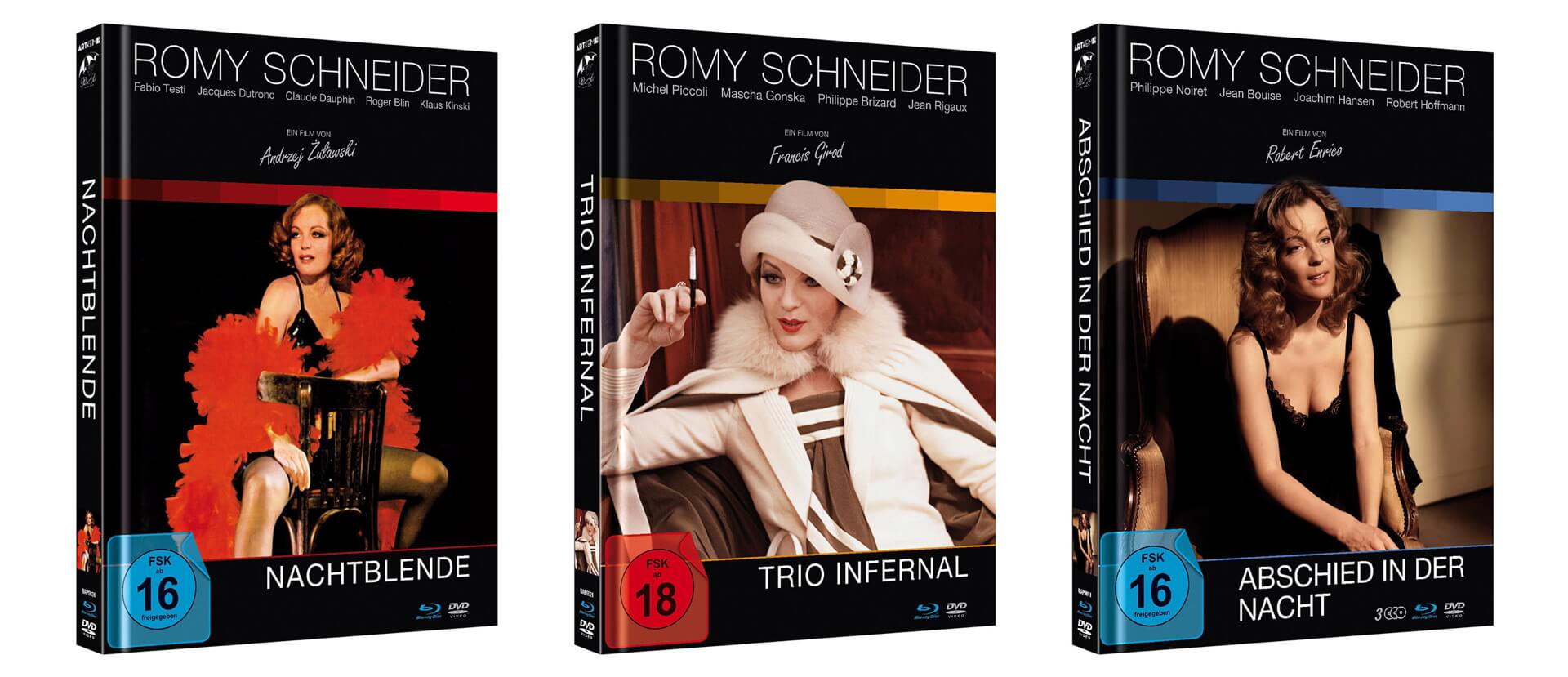
Teaser & Trailer [2022]
All 3 films will also be shown in the new high-definition and restored versions in selected cinemas such as the Brotfabrik in Berlin. Likewise, on the occasion of the 40th anniversary of his death, the films can also be found at MUBI and Kino on Demand.


